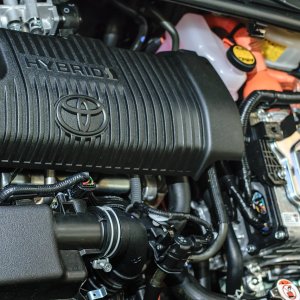USMCA Ratification Will Lead to Investment Certainty, Growth

STORY INLINE POST
Q: How have INA and the Ministry of Economy (SE) advanced in the development of quality standards for critical safety devices?
A: In 2017, SE published a safety norm for new cars, which opened the door to the creation of new official norms. We are about to present the official Mexican NOM for brake pads and we are working on others for dampers, light bulbs and filters, which are the main safety points that need replacement components. We expect to have these NOMs published between 2019 and 2020. The idea is to provide structure to the replacement market and increase safety in the 35 million cars that circulate in the country.
Q: How can Mexico maintain its position as the fifth-largest supplier of automotive components worldwide?
A: Mexico has several characteristics that make it attractive for the production of automotive components. One is its geographic proximity to the US and Canada. We are the only low-cost country in the North American region, so the 17 million vehicles produced in the NAFTA region have Mexican auto parts. The strength of the US market has given us the opportunity to grow in past years. We are the most important supplier of auto parts to the US and Canada. Another advantage is the renegotiation of NAFTA, now USMCA. Although it is still pending ratification, its successful renegotiation provided guarantees to investors and companies in Mexico to continue producing for the NAFTA market.
The automotive and auto parts industry in Mexico is very dynamic. Domestic consumption is decreasing but export activity is robust. Brazil is also helping exports grow. Since the Brazilian economy is expanding, we are exporting more to the country. Moreover, in March 2019, Mexico and Brazil launched a free trade agreement, which boosted our commercial relationship. Although demand from Brazil will not equal that in the US, it will help us boost our exports.
Q: What main threats could hamper the growth of the Mexican auto parts industry?
A: A main risk is the availability of qualified labor, which includes blue-collar workers, technicians and engineers. Some parts of the country are practically saturated but other areas have no space to continue growing. Migration toward industrial areas is not ideal because it generates social problems. The ideal solution would be for the industry to move toward cities with workforce availability. This is something the government needs to promote through federal policies.
Another aspect that limits growth is job security. The new Federal Labor Law establishes significant changes in the employer-employee relationship and both sides need to learn how to best work together. This change is necessary and mandatory, not only because of USMCA but also because of Mexico’s commitment to the International Labor Organization.
Q: What impact could USMCA have on Mexico’s quality and quantity of available labor?
A: We are starting to work with SE and the Ministry of Public Education to ensure academic plans in CONALEP and regional technical schools have a wider reach and better quality. We want these centers to emulate what is taught in the technology schools of world-class manufacturing hubs like Detroit, Germany, France, Korea and Japan. We are not worried about quantity because we are about the quality of our graduates. Today, we have a significant number of 15-20-year-old youngsters entering specialized technical schools, so we need to take advantage of this volume of human resources and train them appropriately.
Q: Now that USMCA is pending ratification, how are INA and its members working to comply with new local content standards?
A: These new standards will benefit auto parts producers across North America. Companies that use components that are imported from outside the region will have to find a way to buy them or produce them locally. This will surely lead to investments in all three countries. This will be a gradual process and Mexico could use it to attract more FDI. Still, we need political and investment security and a robust implementation of USMCA.
Q: How is INA supporting smaller suppliers to help them comply with quality standards and speed up the process of complying with local content requirements?
A: Rather than helping them to develop manufacturing and quality standards, we are helping smaller players to connect with Tier 1s through opportunity identification programs. If they do not see a business opportunity, companies will hardly invest in new machinery and quality processes. We have developed a supplier development program, with SE’s support, through which we visit around 150 suppliers, audit them and link them with potential clients.
Q: How can automotive suppliers prepare to take advantage of the diversity of makes and models present in the Mexican market?
A: More than an advantage, this presents a difficulty because it creates a lot of options. Auto parts producers and wholesalers are focusing their production on medium and high-volume auto parts while importing low-volume products from Asia.
Q: What is the best strategy for suppliers of original-equipment level components to become the go-to option for final consumers?
A: Auto parts manufacturers with original equipment and aftermarket activities must invest in marketing and branding. Very few companies invest in advertising their brand in the market. They invest in branding at expos and points of sale, but not in media that reaches the general consumer. Most vehicle owners do not know about auto parts brands and usually leave the decision to the mechanic. Instead, these companies should invest in massive campaigns to raise awareness on the kinds of products that can save lives in case of an emergency.
Q: Despite the ongoing sales downturn, Mexico’s vehicle production and exports continue to grow. How long can this situation be sustained?
A: It will be sustained as long as the US economy remains strong. The US president has made it clear that he needs to have a dynamic economy with happy consumers to achieve re-election in 2020. Surely, in 2019 and 2020, we will continue to see a US with strong consumption and good production, which would underpin production in Mexico.
Q: How on track is Mexico to achieve fourth place among the largest automotive component manufacturers by 2020?
A: We are very well on track to reach Germany’s production volume. As a consequence of the commercial war between the US and China, North America will have the opportunity to attract more Chinese investment for auto parts production and we will surely see some Chinese companies arrive to Mexico.
Q: How much growth do you expect for the auto parts industry in 2019 and how will you support your members during this time?
A: We believe we can continue growing at a 33-34 percent rate in 2019 and 2020. The most important thing is for USMCA to be ratified, which is why we are working with CCE to ensure the US Congress makes this happen. We know this ratification is crucial not only for the automotive industry but for the entire country and for the US, as well. We are also coordinating with the Mexican government to collaborate on the education and training of engineers, technicians and blue-collar workers, as well as the development of the supply chain and investment attraction efforts in terms of technology. In this area, we compete with countries like India, Brazil, China and South Korea that, unlike Mexico, have significant governmental support for investment in R&D. We need to find a way to attract these investments by providing similar fiscal incentives.
Roundtable: What is the best opportunity for aftermarket players to take advantage of Mexico’s growing and aging vehicle park?
A: The greatest threat to national auto parts manufacturers is China, which is the largest auto parts manufacturer in the world and the largest manufacturer of aftermarket components. Unfortunately, Mexico does not have a tariff barrier against Chinese products like other countries do. The only way for national producers to defend their market is through quality NOMs. The country is not against product imports; we are against the import of bad-quality products. We need to supply the aftermarket with high-quality products rather than low-cost and low-quality products.
























